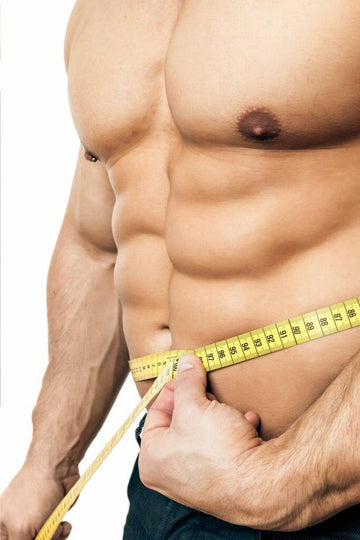If you keep feeling like you're not losing weight, even though you eat healthily and exercise regularly, you should calculate your body fat percentage at regular intervals. It's important not to let your scales confuse you. When you exercise regularly and eat healthily, your body composition changes. You burn fat and build muscle. However, this also means that no weight loss is noticeable on the scales. You may even gain weight. This is because muscle is heavier than fat. But when it comes to the appearance of your body, the shift in fat tissue has a drastic effect. After all, muscles ensure that your body looks more defined and toned. But the smaller volume of muscles also has a decisive influence on your body, making it look slimmer. However, if you look in the mirror every day, your perception is distorted and you don't recognize your successes. But you have the opportunity to measure these successes in different ways.
Measuring performance
If you want to diagnose your physical performance, you have various options. For example, you can use the Cooper test and spiroergometry to check your endurance. If you would rather determine your strength, you can carry out a maximum strength test. In order to be able to see your success in the mirror, however, you should calculate your body fat percentage. If your goal is to tone your body or lose weight, you need to minimize your body fat percentage. By calculating your body fat percentage, you have the opportunity to document your initial values and check the effectiveness of your training program. The best way to do this is to create a follow-up diagnosis. This way, you can take targeted action if the fat pads are not disappearing as easily as you would like. If you can see how the values are continually decreasing during this follow-up diagnosis, this will give you an additional motivational boost.
What does body fat percentage indicate?
This indicates the percentage of fat in relation to total body mass. Women have a higher body fat percentage, which increases with age. Therefore, the optimal body fat percentage is classified in relation to age and gender. The ideal body fat percentage for women between 20 and 39 years of age is 21 and 33 percent. Younger women have a body fat percentage of around 25 percent. For women between 40 and 59 years of age, a body fat percentage of 23 to 34 percent is considered normal. For men between the ages of 20 and 39, a body fat percentage of 8 to 20 percent is considered normal. The normal range increases to 11 to 22 percent between the ages of 40 and 59. Values below 25 to 20 percent are considered healthy.
How low can the body fat percentage be?
If you eat a balanced diet and exercise regularly, these values can be significantly lower. A professional athlete often falls below the 10 percent mark. Bodybuilders have even lower values so that the muscles are more defined. However, a certain percentage should not be exceeded. For men, at least 5 percent and for women 10 to 13 percent are considered essential.
The body fat percentage for the six-pack
Many athletes don't have to train to get a six-pack. It's already there, but it's covered by a layer of fat. In general, you can keep in mind that you shouldn't have more than 8 to 12 percent body fat in order to make your six-pack visible.
Calculate your body fat percentage
You can calculate your body fat percentage using various methods. For example, with a caliper. This is a pair of pliers that determines the thickness of the skin fold. You can also carry out bio-impedance analysis to calculate your body fat percentage. This involves electrical resistance measurements that determine the composition of the body. However, body fat scales have become established for private use, as they are the easiest to use and the value can be read off easily.





